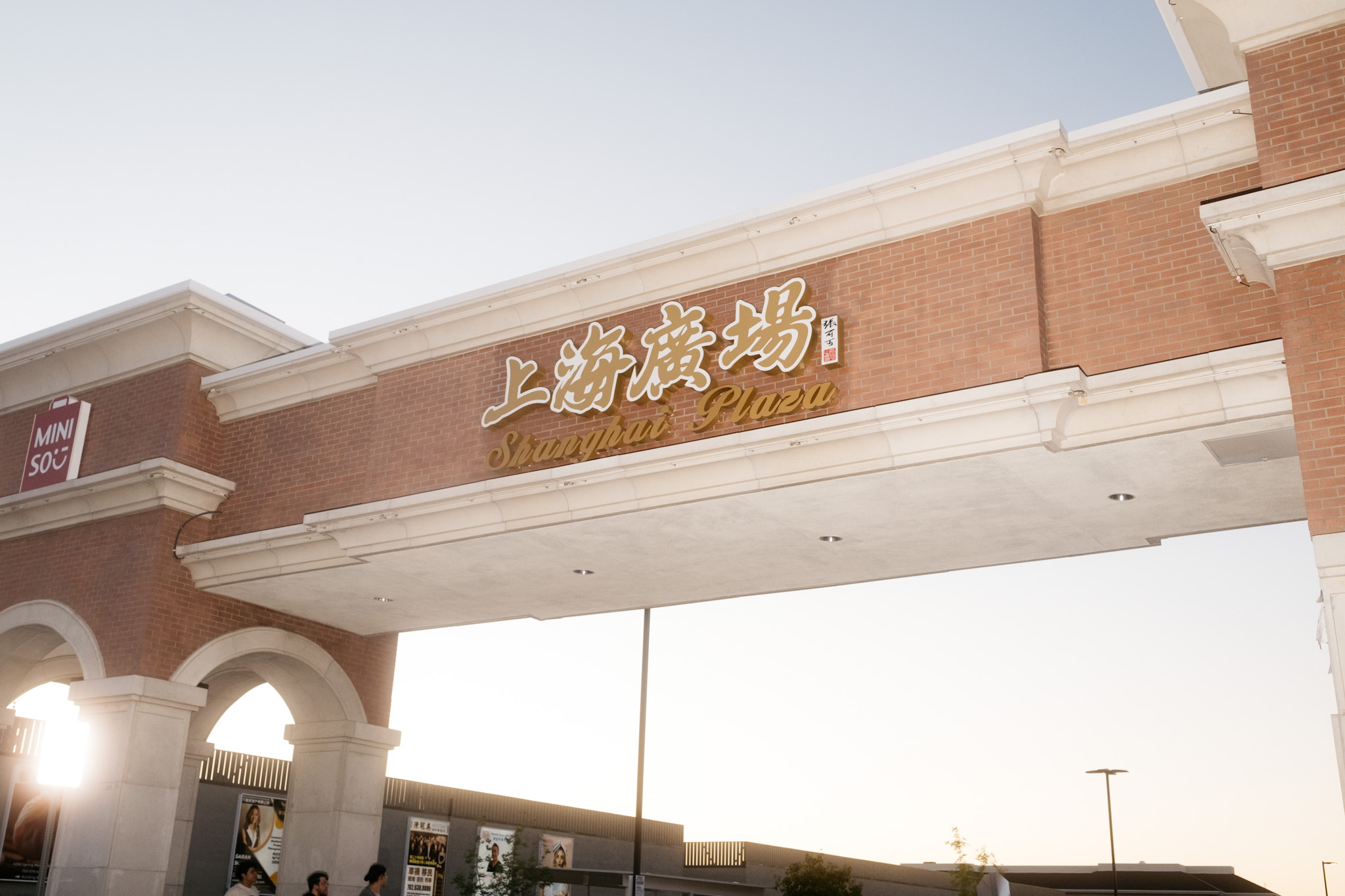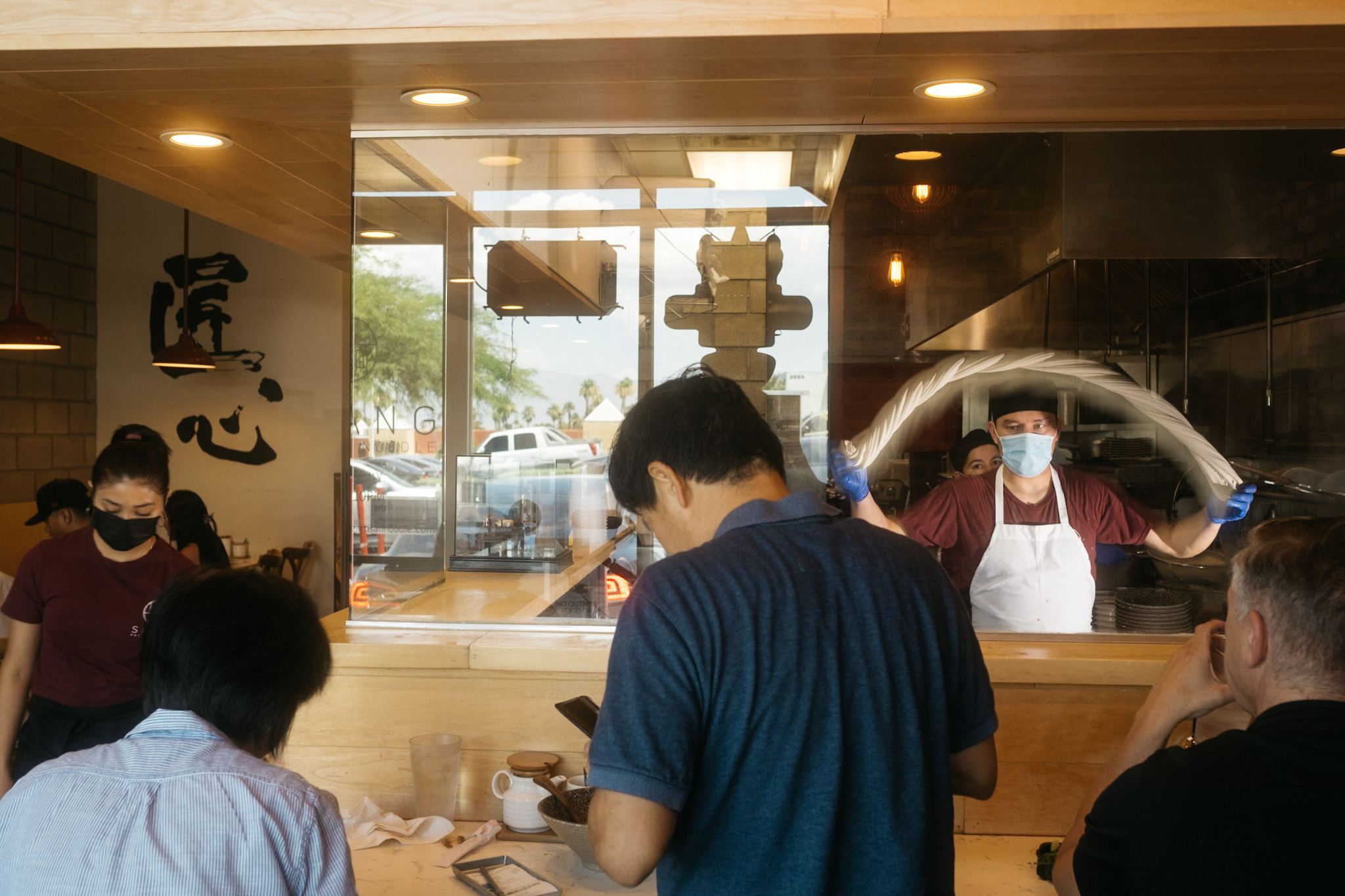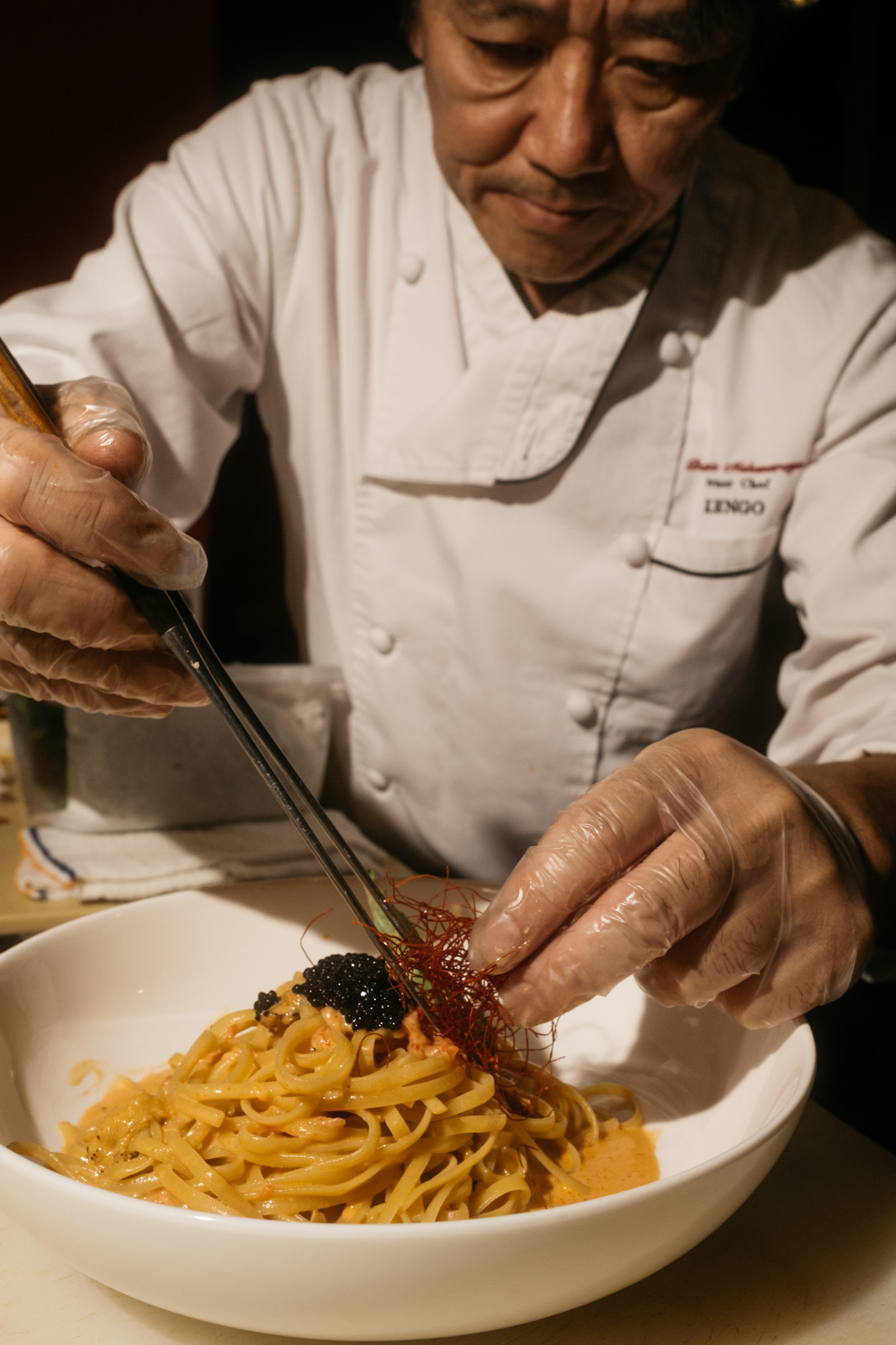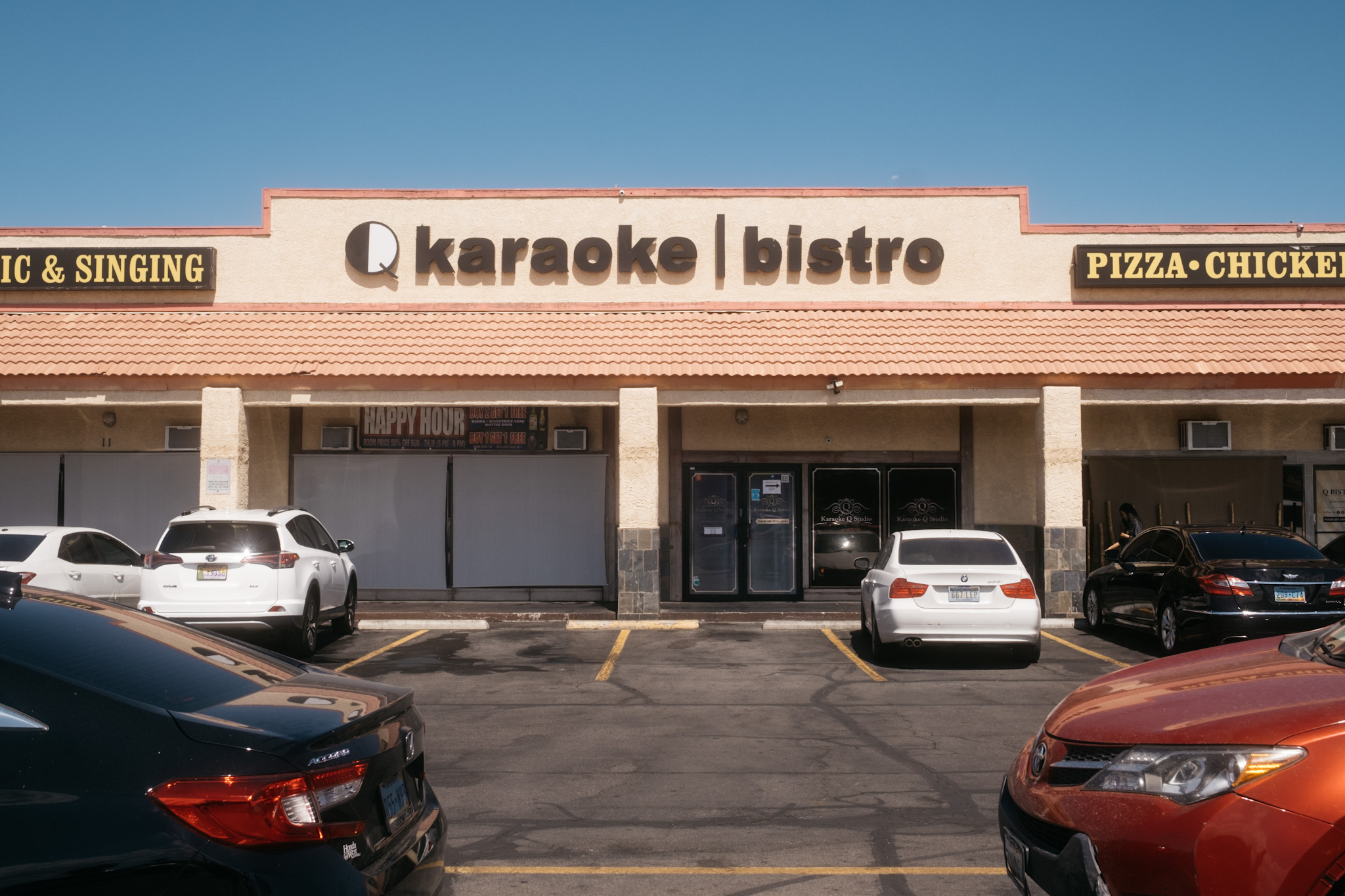I’ve lived in Vegas most of my life, but growing up, I didn’t have much familiarity with Vegas’s Chinatown. Primarily because I come from a big Filipino family that likes to cook (a lot), my parents and extended family didn’t take us there often when I was younger (this was before my mom’s stint as a professional Yelper; more on that later). But it was also that the requisite faux-Oriental facades and clustering of Asian eateries, serving food from disparate countries of origin, always seemed a little hokey to me, a little too much, servicing a cadre of out-of-towners looking for a familiar kind of exoticism.
My family’s various households consisted of Catholic art, tons of photos, and wooden decor. There was little in the way of stereotypical signifiers of Asianness when I was growing up, and because I also come from a black family, the parallax between the two often resulted in my feeling that to be authentically any identity, you came from ordinariness. This likely contributed to my initial aversion to the idea of Chinatown, where orientalism (though I didn’t have the language for it then) seemed rampant.
Videos by VICE
You learn things as you get older, one of them being how to peel back false layers of artifice. And there are fewer better places to spend a night out than in Vegas’s Chinatown, with style and no shortage of affordable, high-quality options. It both is and isn’t what it seems. The put-on nature of the long section of Spring Mountain Road that Chinatown takes up, complete with dragon statues and paifang (traditional Chinese gateway arches) is “for” white tourists the same way any fried cylinder of meat and vegetables constitutes an egg roll. It depends on who is making the product, who is receiving it, and, more importantly, where you’re looking. If you only have a little time to kill, Spring Mountain is where you need to start. It’s the preview, the appetizer, the teaser.


Some may have questions about what a Chinatown in Vegas even is, and, as was the case with me as a child, who it consists of. In the early days, Asian immigration to the American West was work-oriented. In a state like Nevada, mining and the railroad became primary sites of employment for Chinese immigrants, numbering about 10 percent of Nevada’s population by the late 1800s. But they were forced from the infrastructure industries, who sought to protect white employment, and found work in traditionally feminized areas like cooking and laundry. Fast forward to the mid-70s, and the opening of the California Hotel, which, after failing to attract many actual Californians, began to market itself to Hawaiians, a sizable population of whom both lives and visits Vegas in such vast numbers that the city is often called the “9th Island.” By the 90s, the nascent suburbanization of Las Vegas cemented the strip mall as a key architectural feature of retail stores and restaurants, and that’s how Chinatown started here. While other Chinatowns are often located in centralized locations within their cities and architecturally diverse, the Vegas one is closer to the suburbs and situated within several plazas (what we call strip malls): stucco exteriors, large parking lots, businesses side by side.
This can make for an overwhelming experience when you come to an area as densely packed as Spring Mountain, where there’s a lot of everything and a lot of it is targeted towards Asian tourists. So many of the city’s strip malls are indistinguishable from one another, but Chinatown, as clichéd as it is in places, stands apart.

For me, a night out in Chinatown starts at Shanghai Plaza, one of the more up-and-coming areas of Chinatown, further east from the main throng of restaurants on Spring Mountain. The whole of Shanghai Plaza, seemingly swallowed by a large parking lot, wraps a series of two-story buildings that house everything from Mexican popsicles to Asian hot dog shops to Okinawa-style onigiri. Bright fluorescent signage (not everything is neon in Vegas) advertise bail bonds, lawyers, stores that are no longer there, and the crowded mess of storefront logos that make up a given plaza’s marquee. Across the street, at Ichiza, you can get well-priced, homey Japanese food served by friendly staff (I favor their rich miso ramen and crunchy, light tempura shrimp), including a bewildering number of off-menu items advertised on handwritten pieces of printer paper stapled to the walls. Inside, you can sit at a table or the shoes-off communal table in the back, right next to the bar.

I believe in a form-agnostic night out, meaning dessert can happen at any time. My friends and I like Korean ice cream chain Somi Somi. Its menu is admirably simple, with a limited number of flavors and combinations (horchata, banana, coffee, sesame, matcha, vanilla), and the option to have your order served in a cup, or taiyaki-style in a fish-shaped waffle cone. The Paina Cafe, a poke spot a couple miles up Spring Mountain, serves some of the best mochi donuts I’ve come across. It’s a little place, with a simple facade with a sign and a takeout window, tucked into the platonic ideal of a strip mall. Paina’s mochi donut flavors change often, but the core staple is taro. There are plenty of places in Chinatown now that make these, but there’s something about Paina’s that inches the others out—the donuts are not too large, just sweet enough, and never dry.
Go back down Spring Mountain to get to 99 Ranch, an essential Asian supermarket, which sits in one of the larger and more ornate Chinatown plazas. It’s impossible to overstate the role that a solid run to the grocery store can have on your night out: for hydration, for munchies, for a nice, empty parking lot to cry in if you’ve shown up after closing hours. It’s also where all the best home cooks I know, like my Lola, shop for supplies (choice harder-to-find groceries: spiky durian, bamboo shoots, good rice noodles), and where me and a few buddies in high school wandered late at night when we were looking for snacks that reminded us of our grandparents, like chicharon or those green tea Kit Kats.


You’re hungry, I know, so let’s point to some more full menus. On Flamingo Road a few avenues over and technically out of the footprint of Chinatown, sit some of my mom’s favorite Asian spots. For context, my mom used to run the social media page for Vegas Yelp, which means I’ve been to about a quarter of the restaurants worth sampling in town than she has. Her word is worth listening to. She emphatically endorses Shang Artisan Noodles, a tiny, tiny place next to a McDonald’s and a chain sandwich store in a plaza that’s built on one of the few hills in the city. Order the flagship Shang beef noodle dish, one for yourself now and one to go. Shang does not take phone orders and is almost always stuffed to the gills, but one of the key features of the place, apart from its delicious, ridiculously rich braised beef soup, broth, and wontons, is the open kitchen where you can watch a skilled cook hand roll, stretch, and cut each batch of noodles. The process is mesmerizing, made all the more impressive by how droll and bored the person making the noodles often looks.

If you’d rather stay on Spring Mountain, head to Trattoria Nakamura-ya (another of my mom’s favorites), which sits in a particularly small strip mall, unassuming due to its lack of conspicuous signage but also its hairpin turn from the road, depending on the direction you’re coming from. Its neighbors, Raku and Sweets Raku, are two of the finest restaurants in the city, good enough for off-duty Strip chefs, as rumor has it. Still, I’m partial to Trattoria, which, as one might glean from its name, is a Japanese-Italian fusion joint with the most deliciously spicy pasta (the spicy jidori chicken linguine is my favorite) and an endearingly matter-of-fact atmosphere. Checkered tablecloths, a small room with a limited view of the kitchen, vaguely Italian decor that has the feel of a soap opera restaurant, and pleasantly straightforward selection once you get past the mashup.


Once you’re full (and maybe a bit gassy, depending on how wimpy you are with spicy food), you might as well get on your feet and sing yourself hoarse, meaning you should end your night at Karaoke Q Studio. This karaoke joint has a full menu, which will come in handy after several hours of singing and laughing in one of its freezing, hilariously decorated rooms, walls covered with what seems to be clipart of random international cities, karaoke machines programmed with background video from Asian soap operas that have nothing to do with the song you’re singing.
One of the pleasures of Chinatown here is that, no matter what fads come and go, no matter how quickly and totally aspects of Asian culture are commodified and simplified, there has always been and will be a sizable local population invested in the real thing. Not out of any slavish fetishism for authenticity, but because sometimes simple experiences, done well, beat out bells and whistles, which, of course, are plentiful in Las Vegas as well.


Nicholas Russell is a writer from Las Vegas.
This story is part of The VICE Guide to Las Vegas, a no-holds-barred journey through the skanky desert jewel of the U.S.A.






